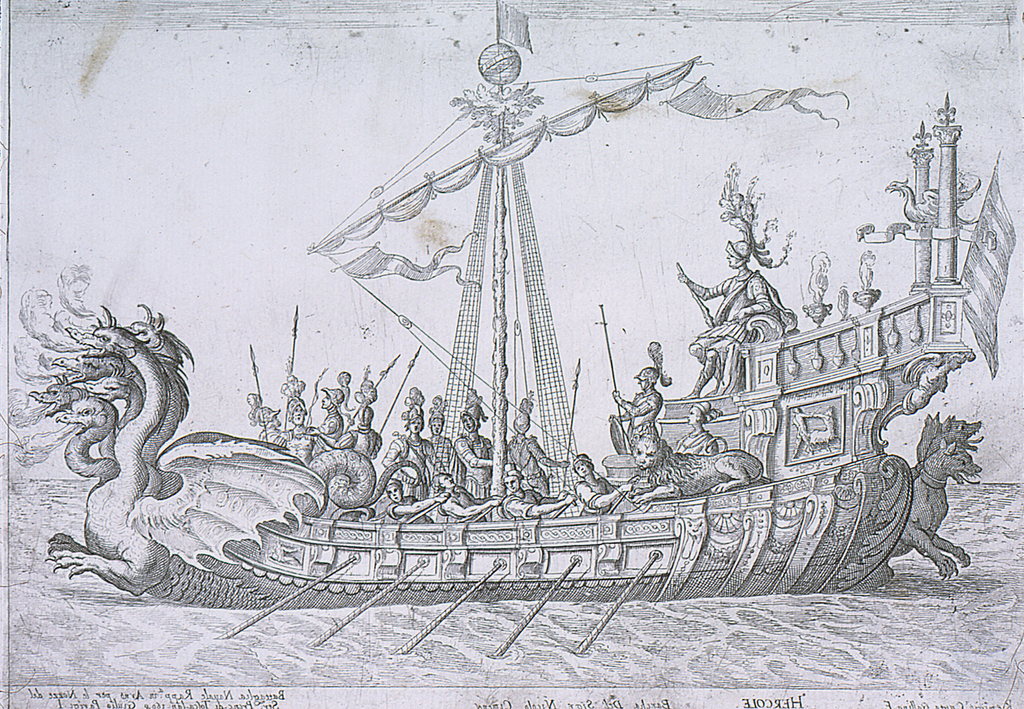It is easy to think, in the age of Pinterest and the Knot, that weddings have never before been so extravagant. Without knowing the history of weddings in the West, we all too often find ourselves rolling our eyes at 30,000 dollar weddings. But, those tasty, miniature, artisanal canapés with pickle remoulade (at fifteen dollars a pop) are not actually as generation Y as you might think. In fact, they are a pretty striking carry over from weddings in Early Modern Europe. During the Renaissance in particular, lavish weddings were reserved for nobility, merchants, and money men (such as the Medici) – essentially, the top tier of society.
This print from Italy was executed in 1608. Neptune is perched high above winged male figures who appear to propel the ship along with oars. What does this have to do with weddings, you might ask? It is a print from a “Series of Naval Battles for Wedding Festivities of Cosimo Il de'Medici.” The depicted attraction was likely actualized, along with several others, and floated in large outdoor “oceans” as wedding entertainment. These spectacles were assuredly only a few among innumerable others that celebrated the union between Cosimo II de’Medici and Archduchess Maria Maddelena of Austria in 1608. Not only was the marriage a political triumph, but the wedding itself also served a propaganda role–deftly displaying the magnitude of the Medici fortune and the importance of their family. The food, entertainment, and events were all conspicuous and outlandish, even by today’s standards.
Cosimo II was a great patron of the arts and it was under his rule, and other members of the Medici family, that weddings became massive public events meant to be striking displays of power and money. Similar to our current desire to challenge the ephemeral nature of a wedding by taking photographs, the Medici wished to immortalize the union and all that it stood for – both politically and lineally. This desire provoked the Medici to commission prints of wedding festivities such as the ones in the Cooper-Hewitt collection. This made the event portable and tangible, allowing for its easy dissemination throughout the rest of Europe. It was with events such as these, and their consequent representations, that Italy became one of the culture capitals of Europe during the Renaissance.
So, the next time you find yourself at a wedding, wondering just how much it costs to wine and dine 250 guests on quail eggs and a delectable vintage named after the happy couple, you at least know when and where it all started.
